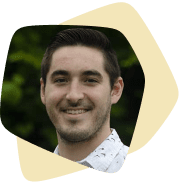Share this article
A big event in ‘the biggest little city’
Set against the backdrop of the Sierra Nevada, the first-ever joint conference of The Wildlife Society and American Fisheries Society will focus on a broad array of natural resource topics and bring together wildlife and fisheries professionals for a unique gathering.
The historic event takes place Sept. 29 to Oct. 3 in Reno, Nevada. Reno calls itself “the biggest little city,” and this conference will be a big opportunity for participants. It’s expected to draw up to 5,000 wildlife and fisheries professionals from various state and federal agencies, universities, private corporations, NGOs and other organizations from across North America and around the world.
TWS President Darren Miller and AFS President Jesse Trushenski have brought together six renowned speakers for two joint plenary sessions that will bookend the conference, on Monday and Thursday mornings.
Monday’s session, “Communicating Sustainable Use of Fish and Wildlife,” features Becky Humphries, CEO of the National Wild Turkey Federation and committee member on AFWA’s Blue Ribbon Panel, with over 40 years of experience in wildlife management and conservation; Shane Mahoney, president and CEO of Conservation Visions Inc., a vocal proponent of sustainable use and a collaborator on media and film campaigns to communicate conservation topics; and Zeb Hogan, host of National Geographic Channel’s “Monster Fish” and a research assistant professor at the University of Nevada, Reno. Hogan’s efforts on the show attempt to raise awareness of the world’s largest freshwater fish and the fragile ecosystems they inhabit.
Thursday’s session, “Communicating Conservation to Diverse Audiences,” brings together J. Drew Lanham, a Clemson University wildlife ecology professor, author and poet known for his book, The Home Place: Memoirs of a Colored Man’s Love Affair with Nature; AFS President-Elect Scott Bonar, who heads the U.S. Geological Survey’s Arizona Cooperative Fish and Wildlife Research Unit, and whose focus on natural resources communication include his The Conservation Professional’s Guide to Working with People; and Serra Hoagland, U.S. Forest Service liaison officer and biologist and Laguna Pueblo tribe member, who has been a strong advocate for combining traditional ecological knowledge with Western science and inspiring the next generation of natural resources professionals, particularly Native American youth. She received TWS’ Diversity Award in 2017 for her efforts on that front.
Get ready to learn
This year’s program features one of the greatest varieties of learning opportunities we’ve ever offered, with 33 symposia, 28 trainings and workshops, plus panel discussions, contributed paper sessions and posters. Here’s a glimpse at some of the anticipated sessions. Check out the entire program at afstws2019.org.
Symposia
Resource tracking by fish and wildlife: scientific progress and management implications
Traditional habitat management has generally assumed that habitats do not change very fast, yet they may provide important food resources for only a few days or weeks each year, forcing animals to move among habitat patches to meet their energy needs. This session will review research on resource tracking across fish and wildlife, introduce advances in resource tracking science; provide examples of how managers are updating management regimes and assess how species that track resource pulses will fare in the Anthropocene.
Fisheries and wildlife education: needed competencies, current pedagogy and distance learning
This session will focus on current trends in student education throughout the natural resources field, including undergraduate competencies, re-educating the educators and distance learning opportunities in wildlife and fisheries. It will include presentations from state and federal employers, giving a counter-view of undergraduate and postgraduate education.
Meals, metabolism, microbes and management: linking foraging behavior and physiology to predict demographics in wildlife
New genetic and chemistry techniques are providing unprecedented views into the nutritional and chemical opportunities and challenges that plants present herbivores, and likewise, how herbivores and their gut microbial communities respond to the nutritional and chemical profiles of their food plants. This session will use wild herbivore systems as case studies of how plant chemicals challenge herbivores and the genetic, behavioral and physiological mechanisms that mammalian and avian herbivores have evolved to overcome these challenges.
Wildlife Connectivity for Dynamic Landscapes
Establishing or preserving functional landscape connectivity allows for movement and gene flow among populations, increasing the likelihood of population persistence and supporting recovery. This session explores advances in modeling and conservation approaches reflecting environmental variability related to extreme events, climate change, land-use shifts and expanding urbanization.
Revising Species Status Assessments for endangered species decision making
To address a call for improved consistency and transparency in species risk assessments, the U.S. Fish and Wildlife Service developed a new framework applying conservation biology principles of representation, resiliency and redundancy. Case studies in this session will illustrate the applicability and flexibility of the new framework.
Workshops
Spatial sampling and study design
Many methods in the traditional sampling toolbox were formulated in disciplines with experimentally controlled studies, but such textbook cases are uncommon in applied wildlife and fisheries science, and practitioners are often compelled to use observational methods that necessitate alternative approaches. This workshop provides an overview of practical options for sampling and monitoring designs in wildlife and fisheries studies, covering the three components of ecological study designs: spatial, temporal and site.
Hierarchical statistical modeling with NIMBLE
NIMBLE is a software package for general hierarchical statistical modeling that adopts the same modeling language as JAGS and WinBUGS but provides more flexibility. This workshop will cover application of NIMBLE to common wildlife models such as spatial capture-recapture, occupancy and abundance models, state-space models and integrated population models and spatial models. Attendees will learn how customizations to NIMBLE via new functions, distributions, or MCMC sampling configurations can yield large boosts in MCMC performance, sometimes by orders of magnitude.
Course-based Undergraduate Research Experiences (CUREs) — Educational Workshop for Implementing CUREs in Wildlife and Fisheries Courses
This workshop introduces the concept and framework of a course-based undergraduate research experience (CURE) called Squirrel-Net, a set of network-supported modules currently implemented across multiple course levels and institutions. The series provide students with authentic research opportunities, as well as tools and training to instructors. This session presents other open-access teaching modules, including instructor resources, and concludes with a panel discussion of faculty from three institutions that have participated.
Training
Endangered Species Act of 1973 – an overview
In this session, the USFWS’ National Conservation Training Center presents the major sections of the Endangered Species Act and translates their significance to federal and state governments and private citizens. Attendee will receive a copy of the ESA, which they are encouraged to highlight and keep as a reference source. Self-graded quizzes will reinforce the most important aspects participants should remember.
Mountains and Water
Attendees will have convenient access to all conference events and activities by booking at the Peppermill Resort Reno, with significant savings off standard rates.
Most of the conference’s educational and training sessions will take place at the Reno-Sparks Convention Center, a quick, free shuttle ride from the Peppermill. A few meetings and events will overflow into the Atlantis hotel, easily accessible to attendees via skybridge. Evening networking events and socials will take place almost exclusively at the Peppermill, making it easy to attend.
But despite all the conference happenings, you can’t come to the foothills of the Sierras and spend your entire week indoors. The region offers a wide variety of landscapes for participants to immerse themselves in, from pine-covered mountains to rugged deserts to stunning alpine lakes, including Lake Tahoe, the largest alpine lake in North America.
To start planning your adventures, visit afstws2019.org/reno.
See you in September
Stay tuned for more details in the coming months. Regular updates and new information will be posted on wildlife.org and afstws2019.org, and disseminated through the eWildlifer and TWS’ social media platforms.
Registration is open at afstws2019.org/register. Our block at the Atlantis is already sold out, but rooms are still available at the Peppermill, so make your reservations now! Rates, booking information and more can be found at afstws2019.org/hotels.
Header Image: Calling itself “the biggest little city,” Reno offers conference-goers urban amenities and natural getaways. ©Reno-Sparks Convention and Visitors Authority








